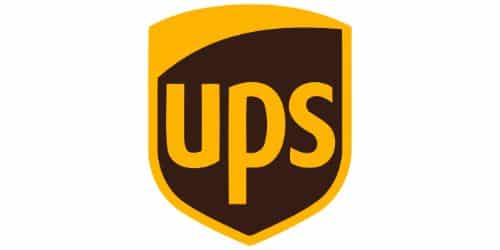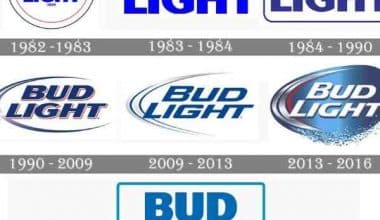With a look at the UPS logo, millions of people throughout the world can instantly recognize their brand and insignia. The top parcel delivery service in the world is the United Parcel Service, otherwise known as UPS or Big Brown. In 1995, the corporation, which has its headquarters in Atlanta, Georgia, shipped more than 3 billion goods to more than 200 territories and nations worldwide. In this article, we will be going into the meaning and history of the UPS logo, the evolution of the logo, the font, color, and the history of the company.
The UPS Logo: What Does it Mean?
Over the years, UPS has put a lot of effort into making its logos meaningful and complex. This is clear in the company’s choice of logo and colors, as well as in how the UPS motto changes over time.
UPS chose the logo to represent itself. This is a good pick for a logistics brand because it stands for dependability and strength.
The color scheme of brown and gold gives the UPS symbol an extra sense of stability. The two colors’ rarity in logo design ensures that the UPS shield will stand out.
One of the most recognizable symbols on the globe today is the UPS logo. Despite having a long history that dates back more than 100 years, UPS is still a well-known brand today.
Also, the company has helped designers all over the world understand what a timeless, classic logo might look like.
Even though UPS logos have changed over time, many things about them have stayed the same. Also, UPS is one of the few brands that hasn’t changed its name in a long time.
This multinational logistics company has become known for shipping and delivery, especially in the United States. UPS has been successful in part because it has a recognizable brand identity that shows strength, dependability, and safety.
Describe UPS
An American firm called UPS offers postal, courier, and other logistical services globally. International delivery service UPS is the best transcontinental logistics network. The business was founded in 1907, and as of today, its services are offered all over the world.
The History of UPS
Teenagers Claude Ryan and Jim Casey were well aware that Seattle has long been known for its industry and ingenuity. They established the American Messenger Company in 1907 with a $100 loan from a friend. The business started out as a small courier service in a hotel basement in the Northwest Pacific. By the turn of the century, it had grown into the United Parcel Service (UPS) that we all know.
Early on, the company mostly sent messages for businesses and sometimes special mail for one of its main customers, the US Postal Service. Deliveries were often made on foot and occasionally by bicycle.
The American Messenger Company acquired its first delivery van in the 1910s, aiding in the company’s expansion. During this time, commercial package delivery became popular.
UPS Outside of Seattle
When Merchants Parcel Delivery bought Motor Parcel Delivery Company in 1919, it grew to include Oakland, California, and started doing business as United Parcel Service.
Three years later, UPS bought a common carrier in Los Angeles that provided services that were uncommon at the time for most delivery services or even the postal service, such as automatically returning undelivered items, accepting UPS checks as payment for items that were “collect on delivery,” and making daily pick-up calls. UPS did well in the decades that followed because it bought this business and decided to offer more carrier services.
In 1927
UPS was present in every significant Pacific Coast city. It had a branch on the East Coast by 1930. The company then began looking for common carrier licenses in the 1950s so that it could deliver packages to and from any client, both private and commercial, wherever in America. This choice put UPS in direct competition with the USPS, which resulted in a number of legal conflicts between the two over the next 30 years.
UPS later relocated its headquarters to California and then, via New York, to Atlanta. In 1962, Jim Casey stopped running the day-to-day business so he could spend more time on his organization, the Annie Casey Foundation. He started the foundation 14 years earlier with the help of his siblings Marguerite, Harry, and George as a way to honor their mother.
The group’s first donations helped pay for a camp for Seattle kids from low-income families. In 1966, Casey changed the mission of the foundation to include the welfare of children who were still in foster care. Casey Family Programs is an independent charity with its main office in Seattle that helps children in foster care in many different ways. Jim Casey passed away in 1983. His bequest gave the Connecticut-based Annie Casey Foundation additional funding. The foundation keeps helping underprivileged children.
1975
Between 1975 and 1990, UPS grew a lot around the world. It started by delivering packages in Toronto, and by 1989, it had expanded to the Pacific Rim, the Middle East, and Africa. Through a number of acquisitions, UPS was able to expand into new areas, and in the 1980s, air shipments became a significant portion of its business.
For the majority of the company’s history, Jim Casey, his siblings, other UPS officials, and their families served as the major stockholders. The company’s shares were originally made available to the general public in 1999.
In 2013, Jim Casey and Claude Ryan’s small business was worth close to $80 billion and made more than $50 billion in sales each year. Additionally, it delivers more than 3.8 billion packages annually while working in 200 different countries and employing fewer than 500,000 people. It is amazing what $100, a little creativity, and hard work can accomplish!
Facts about UPS
Returning to their roots, UPS began hiring bike delivery workers in 2008 in Washington, Vancouver, and several Oregon cities.
UPS has developed software that optimizes truck routes to minimize left-hand turns while making deliveries. By making that choice, the company reduced its annual fuel consumption in just Washington, DC, by nearly 51,000 gallons. Because drivers can turn left at red lights without waiting, fuel consumption is reduced.
When UPS expanded into West Germany, we switched the uniform shirts from the solid UPS brown color to a light brown and white pinstripe.
UPS Sans is the company’s own font. It is a slightly altered variation of FF Dax.
Why is the UPS Logo Brown
Rather than having the trucks be black, the company’s founder, Jim Casey, first wanted them painted red, then yellow. In the end, Soderstrom was able to convince him by saying that yellow trucks would be too flashy and suggesting instead that they be deep brown, which is now known as UPS Brown.
The Evolution of the UPS Logo
Because of its long history and dependability, UPS is a well-known brand. UPS stands out among company logos due to its general simplicity. After decades of branding and using the famous “UPS Brown,” the company has made its logo easier to understand than ever before, but it is still known all over the world.
Even though the logo’s history is complicated, each new version ended up with the same shield shape and a similar shade of brown. The most recent version of the logo shows how fashion has changed and how the company is moving toward modern standards.
The UPS logo is a good example of how business owners can use design ideas for their own companies. Even small startups may handle logo creation themselves with creative tools like our free logo generator. Take some inspiration before you begin by studying the reasoning behind the UPS logos.
One of the most recognizable logos in the world is the UPS one. When Merchants Parcel Delivery expanded into Oakland, California, and started using the name United Parcel Service, it began its illustrious history.
To understand how the UPS logo has changed over the past century, we’ll look at its history, color scheme, and design elements in the sections that follow.
The UPS Logo from the Start, 1919
UPS adopted its first logo in 1919. It featured an image of a dark brown eagle holding a package in its talons. The background featured the outline of a shield made of bronze with a gold border. The words “safe, fast, sure” were inscribed on the package. After UPS merged with one of its regional competitors, the company’s founder, James E. Casey, chose the shield as the company’s official symbol.
Second UPS Logo Version, 1937–1961
The UPS logo was changed in 1937 to represent the company’s rapid expansion. The letters ‘UPS’, which stand for United Parcel Services, were added to the shield in place of the eagle. As the company grew quickly and added more stores to its clientele, it changed its motto to reach more of these customers.
Third UPS Logo Version, 1961–2003
In 1961, the third UPS logo was created. Above the well-known UPS shield was a parcel that was tied together with a string. This logo was made by the business to show what it did best, which was obviously delivering packages. This logo was created by well-known designer Paul Rand with his customary panache. According to the legend, Rand presented the idea to the firm during a meeting. Rand just said, “That’s it,” when UPS asked if he had any additional samples.
Version 4 of the UPS logo, 2003
In 2003, the UPS logo as it is now was unveiled. The shield was altered, and the bundle tied with string above it was taken away. To make the logo more appealing both offline and online, the designer updated the colors and gave the shield the well-liked brown tint. UPS also seems to capitalize on the logo’s simplicity with the tagline “What Can Brown Do for You?”
2003 – 2014
The brownish tones have returned after the 2003 revamp. With its clean lines and slick lettering, the shield looks utterly modern.
2014 – Today
The UPS visual identity was updated in 2014. The style and shapes stayed the same, but the crest went from being three-dimensional to flat and simple. The main hue of the symbol is now dark chocolate, which appears pleasant and calming in contrast to the upper line’s dark and aggressive yellow and the lowercase “UPS” written in a chic sans-serif typeface.
What Inspired the UPS Logo
The first UPS logo came out in 1916. It was an eagle carrying a package over a background that looked like a shield. This collection of images was chosen with a purpose in mind, with the eagle representing speed and the shield representing the dependability of the service. “Safe, rapid, secure” was UPS’s original catchphrase, and both the slogan and iconography were well-liked by customers.
In the first design, brown and yellow-gold tones were used, which are still used today. Brown became the standard color for trucks and uniforms because it can hide dirt and looks good with Pullman train cars. This color was employed in the logo to ensure visual branding consistency.
It is said that James Casey, who started UPS, wanted the first UPS trucks to be red before he decided on yellow. But the only reason he chose yellow for the emblem was that someone told him that solid yellow cars would be too bright.
When did UPS Change its Logo?
In the following century, UPS saw four logo changes. The eagle was eliminated from the second design, which included the initials UPS in a huge font instead. “The Delivery System for Stores of Quality” was the tagline at the top, while “Since 1907” was written on a ribbon at the bottom. This complicated logo followed the rules of the time while keeping the original design of the shield background.
The next version of the UPS shield looked like a box with a cord attached to it. A well-known designer named Paul Rand came up with this redesign. He said that the look of the package reminded him of gifts and gave the logo an emotional element.
Officials at UPS were against the logo at first, but Rand insisted that it was the best choice. The design in question was used by UPS from 1961 to 2003, which makes it the logo that has been used the longest.
Simplification of Font and Color
The effort to simplify has been one of the largest adjustments to the UPS emblem over time. Even the first version of the design, which didn’t have the eagle, had a lot of small details that were hard to see when it was printed small.
Since logos are being used more and more on business cards and websites, companies were told to make their logos easier to understand. Because of the little ribbon element, even UPS’s 1961 logo with the package insignia would not have looked good in some sizes.
Ultimately, the logo shifted toward a greatly simplified rendition of the one from 1937. When you use smaller sizes, the typeface and color scheme are still similar, but there is a lot less detail. Since color gradients are no longer regarded as contemporary, the current logo even removes the minor color gradient that was first used in the 2003 logo.
Elements of the UPS Logo Design
The UPS logo represents strength, simplicity, and power. The shield in the current UPS logo has fantastic font and color combinations.
Shape
The logo’s shape makes it the easiest to recognize. Since 1919, the shield has been a constant component of the UPS logo. Despite numerous attempts to alter it, the logo hasn’t seen much modification. Early versions of the logo had a narrower shield than later ones. The shield has two notches above it.
The 1937 facelift included a flat top, and it has been there ever since. The third iteration of the UPS logo from 1961 still resembles the current form. However, the 1961 version’s parcel feature is no longer present. The current logo is bigger than the ones that came before it, and it looks more like a square than a long rectangle.
Color of the Logo
The logo has always been gold and brown, with the exception of the 1961 iteration. The bronze tint was present in the original hue of brown but has since been removed as a result of changes made to the logo throughout time. The 1961 version used a white background and a straightforward black contour instead of any color at all.
The brand name is printed in gold over a brown background in the current UPS logo, continuing the tradition started by earlier UPS logos. The shield is larger and made of gold.
The font used in the UPS logo is simple but strong, and it has a very elegant look. It has a number of distinct characteristics that have all contributed to the success of the UPS we know today. The lengthy history and proud beginnings of the company, as well as its dependability, is intended to be reflected in the gold letters.
Symbol
The designers used a changed version of the FF Dax typeface to make the custom UPS Sans typeface. The branded palette has changed to a straightforward layout devoid of gradients and gloss. The warm yellow and cocoa brown of the logo have been updated.
The font used in the UPS logo was carefully made by the well-known logo designer Paul Rand. This is another very interesting thing about the font. It is an excellent representation of the company, its principles, and what it stands for.
Who Made the UPS Logo
James Casey, who started the company that does logistics, made the first UPS logo in 1916. The logo had a bronze shield in the background and a picture of an eagle carrying something. Swift, safe, and sure is a compelling phrase that was added to the design.
It was decided in 1937 to update the logo to reflect the expanding goals of the company. At that time, UPS began collaborating with retailers all throughout the nation. The corporation added a new phrase to the symbol that reads, “The delivery system for retailers of quality” to emphasize that significant milestone. The trademark gained authority thanks to the phrase “since 1907” at the bottom of the artwork. The eagle was no longer appropriate for the composition.
The third UPS logo, created in 1961, differed significantly in appearance from its forerunners. When UPS entered the global market, it wanted to make sure that its brand was easy to remember. The new logo was simple and classy. It was a stylized shield with a package hanging from a rope above it. The firm’s name was written inside the shield in a large, black script.
The Development of the UPS Logo
The following remodeling took place in 2003. The brown and gold color scheme of the logo was restored. Light and shadow were used in a way that gave the piece a delicate 3D effect. However, UPS did away with the voluminous look in 2014 and replaced it with a more contemporary flat style.
Conclusion
Even though it looks simple, the UPS logo has been the most popular in the world of logo design for more than 100 years. We can draw several significant conclusions from the UPS logo’s extensive history.
Choose a straightforward image that will evoke favorable associations and connect with viewers all over the world.
To keep your logo current, adhere to contemporary trends and refresh it occasionally. Furthermore, remain true to your brand’s personality. Choose one or two components that will not change while your logo changes.
The UPS logo stands out because it uses brown, which is a color that isn’t often used in logos. However, UPS has been able to establish itself as a well-known brand all over the world due to its distinctive color. Even after Paul Rand’s redesign, UPS made sure to keep its brown vehicles and uniforms the same. Brown was also used in many UPS locations.
Business owners could use the UPS success story as a guide for excellent branding and logo design, regardless of the industry they are in. We looked at the top five best logo designers of 2021 to help you come up with a unique logo for your small business. It can be challenging to produce a sleek yet distinctive design at first.






